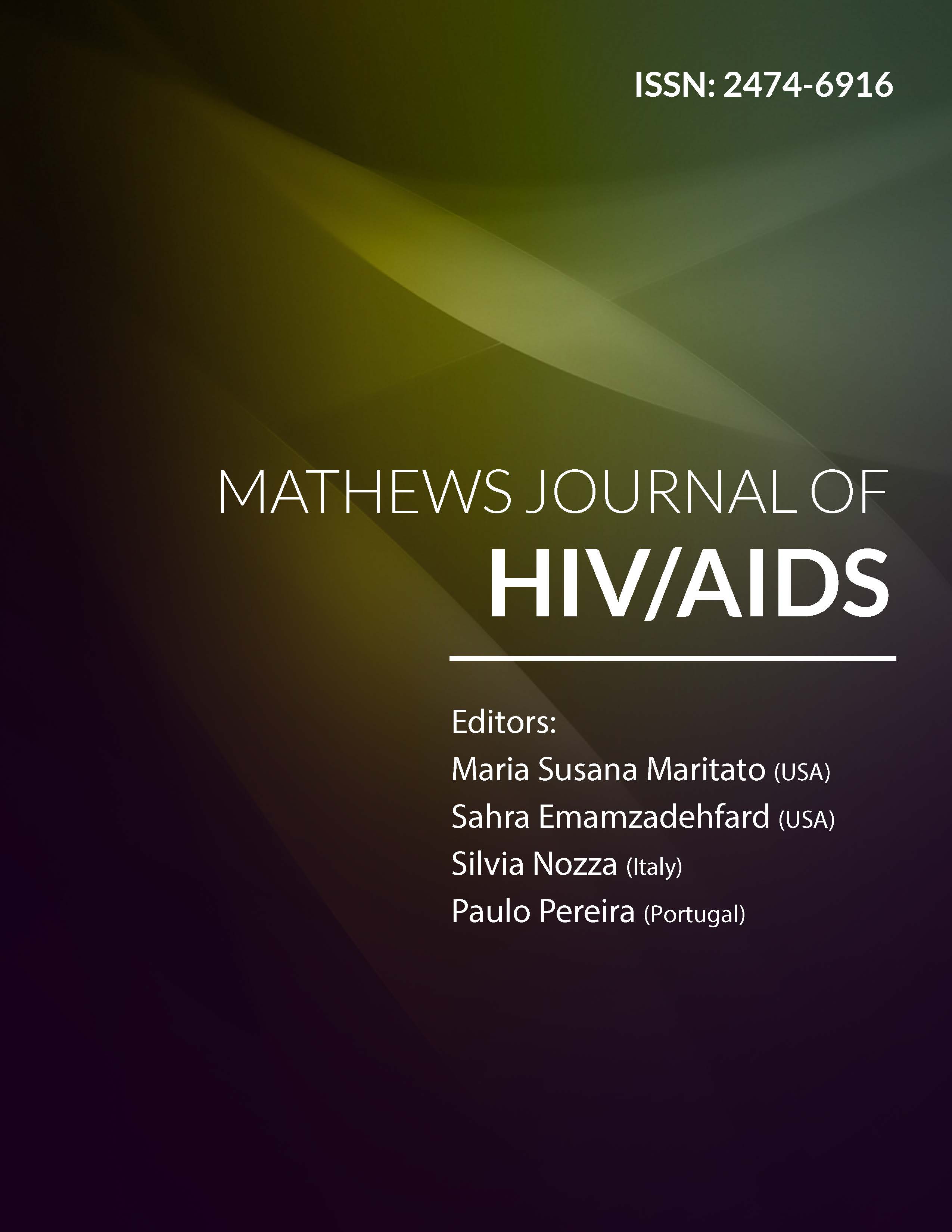
Information Links
Previous Issues Volume 3, Issue 1 - 2018
Gender Difference in Early Treatment Patients for Human Immunodeficiency Virus Type 1 Infection in Kinshasa, Democratic Republic of Congo
Berry Ikolango Bongenya1*, Ramazani Nemwanjare Bukongo1 , Ben Ilunga Bulanda1, Divine chuga1, Jean Yves Debels Kabasele1, Medard Omakoy Okonda1, Christian Tshisumbu1, Erick Ntambwe kamangu*1,2
1 ”HIV / AIDS Focus” Research Group, Kinshasa - Democratic Republic of Congo
2Molecular Biology Service, Department of Basic Sciences, Faculty of Medicine, University of Kinshasa (UNIKIN), Kinshasa - Democratic Republic of Congo.
Corresponding Author: Erick Ntambwe Kamangu, Molecular Biology Service, Department of Basic Sciences, Faculty of Medicine, University of Kinshasa (UNIKIN), Kinshasa - Democratic Republic of Congo, E-Mail: [email protected]
Received Date: 05 Jul 2018
Accepted Date: 18 Jul 2018
Published Date: 23 Jul 2018
Copyright © 2018 kamangu EN
Citation: kamangu EN, Bongenya BI, Bukongo RN, Bulanda BI, et al. (2018). Gender Difference in Early Treatment Patients for Human Immunodeficiency Virus Type 1 Infection in Kinshasa, Democratic Republic of Congo. Mathews J HIV AIDS. 3(1): 018
ABSTRACT
Context: In Sub-Saharan Africa, the epidemic of Human Immunodeficiency Virus (HIV) infection tends towards a certain feminization because of the high prevalence of infected women.
Objective: The objective of this study was to highlight some gender-related differences in biological monitoring parameters in early treatment management for HIV infection in Kinshasa.
Methods: Cross-sectional descriptive study conducted in 8 Ambulatory Treatment Centers (ATC) for monitoring of HIV infection in Kinshasa. Included were all persons over the age of 18 who were serologically positive and willing to participate in the work. Five milliliters of blood was collected in a tube with EDTA anticoagulant to determine CD4 cell counts and viral load.
Results: A total of 153 patients, 60.13% women and 39.87% men participated in this work. The average age of this population was 37 ± 12 years for the general population. The most represented age group, in general, is 26 to 35 years old with 42 patients (27.5%). Clinical stages, CD4 levels, viral loads, and the distribution of HIV-1 strains in relation to gender were different.
Conclusion: In terms of CD4 count and viral load, there is no significant difference in the initiation of antiretroviral therapy compared with the gender. The visible differences are more in terms of age group and clinical stage compared to the start of treatment.
KEYWORDS
HIV-1; Kinshasa; Gender; Biological Parameters.